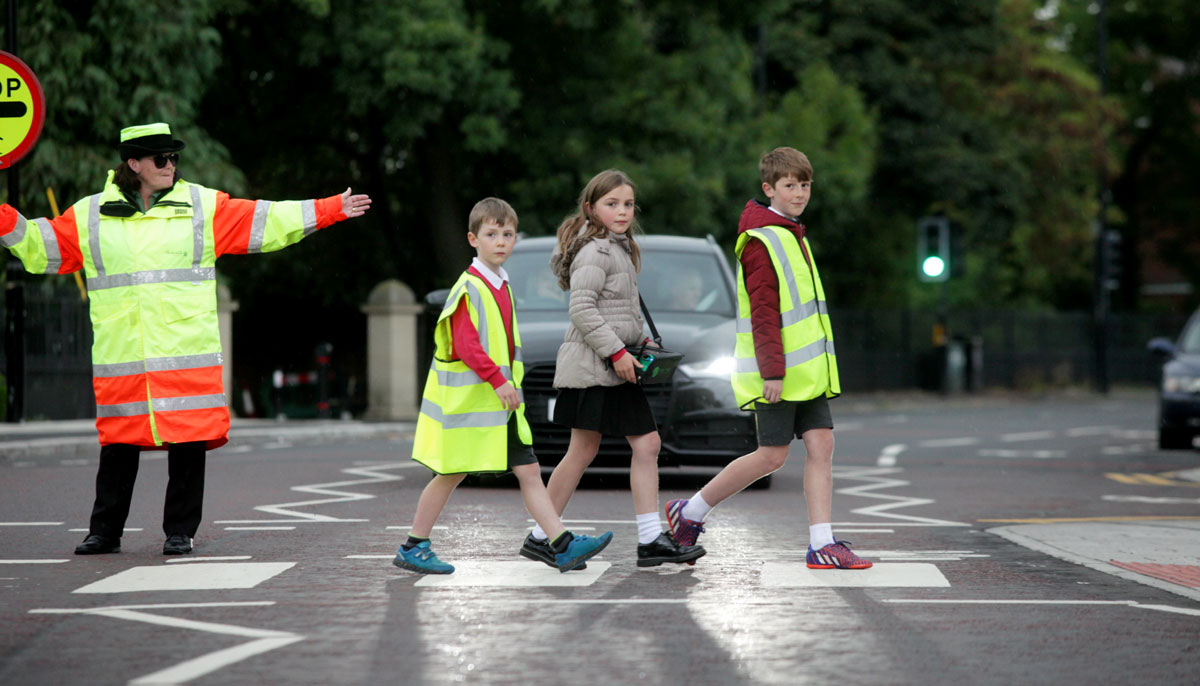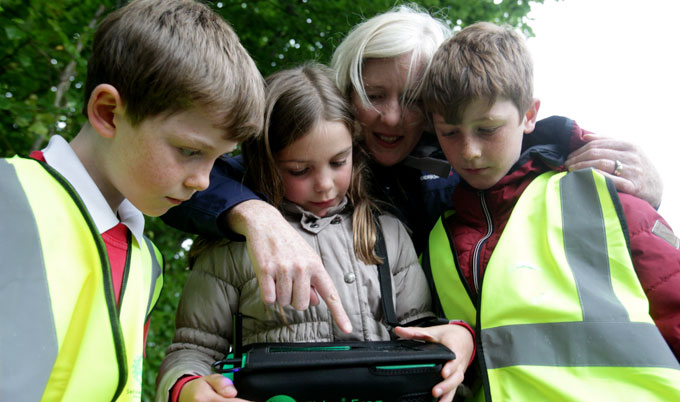Sense my Street
Sense your street
Published on: 13 September 2017
Local communities tap into the UK’s largest urban data set to find out how polluted their street is.
Residents concerned about the air quality around their homes and schools are taking control and testing the pollution levels themselves.
Using static air pollution monitors and hand-held sensors, the ‘SPACE for Heaton’ group, in Newcastle, is testing the air quality around their local area – including their three local schools - to find out exactly how much pollution they are being exposed to on a daily basis.
Carrying out the testing as part of Newcastle University’s Sense My Street project, data collected will be fed into Newcastle University’s Urban Observatory - the UK’s largest set of real-time, urban data.
This will provide a baseline against which the Heaton residents can compare the pollution levels along their own street with the average for the area.

Power to the people
Aare Puussaar, a doctoral researcher in Newcastle University’s Open Lab in the School of Computing who is leading the project, said:
“The aim is to give communities the power to gather data relevant to issues that are important to them at a very local scale.
“This could be anything from air quality and noise to localised flooding or the volume of traffic through the area.
“What makes this project possible is the Urban Observatory which provides us with a reliable source of baseline data against which local data can be compared. Through the Sense my Street project, the public is in charge – identifying the areas which they believe to be pollution hotspots, gathering the evidence and driving change.”
Mark Nelson, who leads the SPACE for Heaton group and is cycling to and from work with an air monitor, said their big concern was air pollution in Heaton following the implementation of the council’s city centre Air Quality Management Area (AQMA).
“The AQMA has been introduced which stretches along Jesmond Road to Heaton Road,” he explains. “We are really supportive of the scheme and are working closely with the council on the Streets for People project which is all about improving the areas for walking and cycling.
“But it’s a really busy area and the traffic still has to go somewhere. Our concern is that it will all just shift to going through Heaton in future and that air quality in the area will plummet.”
“This project is allowing us to gather that data and find out exactly what the impact is.”
Hospital consultant and mum of three Julie Whittaker, who lives in Heaton and whose children attend St Teresa’s Catholic Primary School, is one of the residents who has been taking part in the project. She and her children - Fergus, Jenny and Sam - have been collecting pollution data on their way to school.
“There are seven schools in this small area and that creates a huge amount of traffic in the morning and afternoons,” she explains.
“Ultimately, what we’d like are dedicated cycle lanes so that all our children can safely cycle to and from school. This would not only reduce the number of cars on the road but also improve our children’s health both in terms of reducing the air pollution but also getting them out of the cars and exercising.
“But to push for this we need the facts and figures to back it up. Through the Sense my Street project that’s exactly what we’re doing, gathering the evidence we need to hopefully make a case for reducing traffic and pollution in Heaton.”

Open data for the city
The Sense my Street project, funded by the Engineering and Physical Sciences Research Council (EPSRC), is just one data set that is being fed into the Urban Observatory - a ground-breaking project that monitors Newcastle and Gateshead at multiple levels such as temperature, wind flow, air pollution and traffic.
Funded by Newcastle University and UKCRIC – the UK Collaboratorium for Research on Infrastructure and Cities – the observatory is based in Newcastle University’s Urban Sciences Building on Science Central.
Data from hundreds of sensors is fed into this central hub that is openly available on the internet.
Led by Newcastle University in collaboration with Newcastle City Council and other partners, the aim is for the data to be used by planning authorities, infrastructure operators, emergency services and community groups to help them make better informed decisions about how conditions in the city could affect them.
“There is a wealth of data available in our cities and since it was established in 2015 the Urban Observatory has recorded more than half a billion observations about conditions in the city centre,” explains Phil James, who co-leads Newcastle University’s Urban Observatory research.
“But the Science of Sensing at scale is still little understood and now we’ve captured this data we need many people to get involved in using it to help deliver the cities of the future that communities want.”



